Get To Know Jakarta Public Transportation
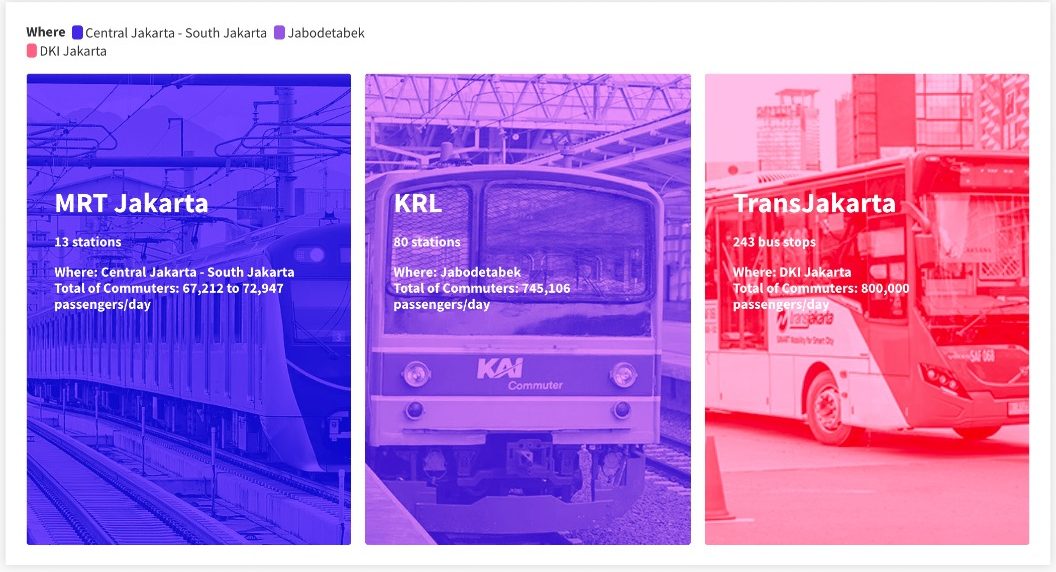
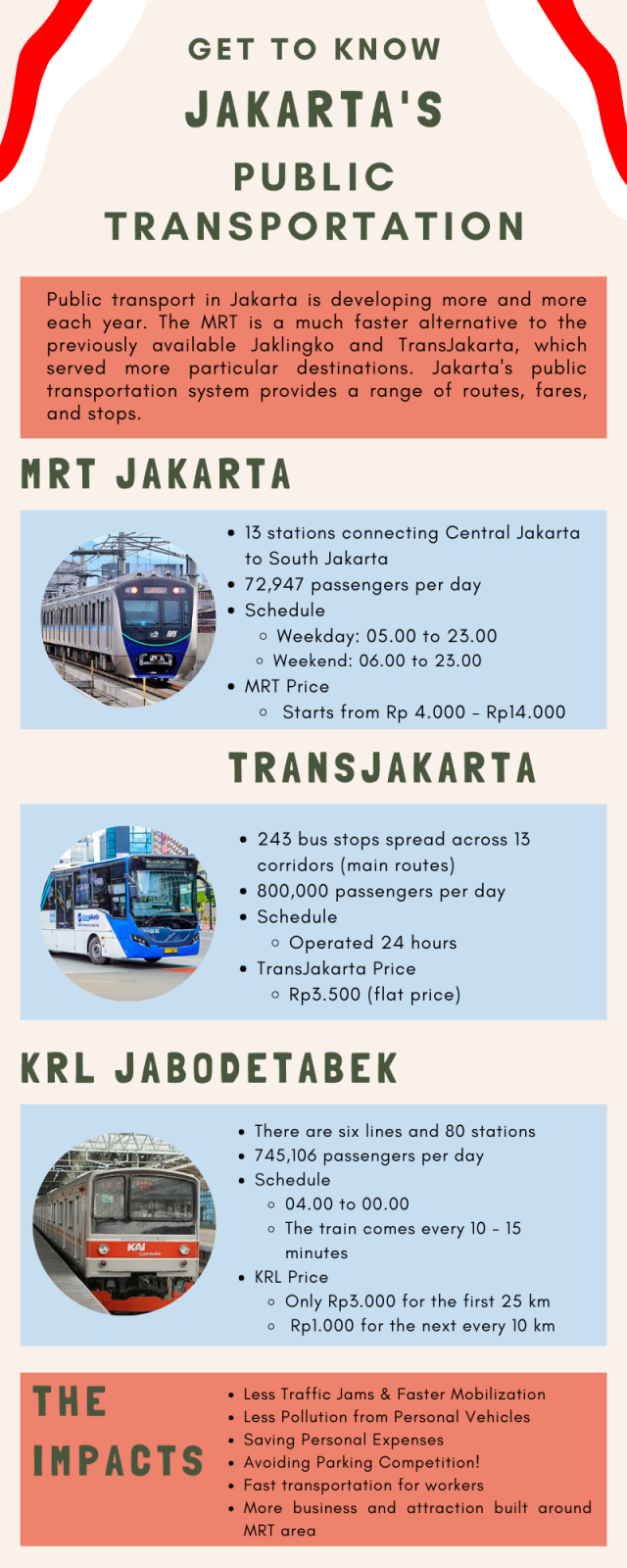
There is no better place to get an overview of Indonesia than in its capital, Jakarta. Around ten million people from all over Indonesia call the vast, spreading metropolis of Jakarta home. A larger number of people are present throughout the day as people go to and from the city for work, and this number again swells in the evenings as people return home.
Jakarta is home to close to 30 million people, hence the city has numerous means of transportation. Public transport is one way to get around in this big city. Using public transportation can be less stressful and more pleasant than driving to and from work, shopping, dropping into town to meet friends, or getting home safely after a good night out. In addition, it benefits the natural world.
Public transport in Jakarta is developing more and more each year. The MRT is a much faster alternative to the previously available JakLingko and TransJakarta, which served more particular destinations. Jakarta’s public transportation system provides a range of routes, fares, and stops.
Learn the ins and outs of Jakarta’s public transportation system from the get-go with the help of this blog!
There is no better place to get an overview of Indonesia than its capital, Jakarta.
Jakarta’s Public Transport From Time to Time
DKI Jakarta, as the nation’s capital, has expanded to include numerous transit options for its citizens. Modern forms of transportation, ranging from the MRT and LRT to the Commuter Line and TransJakarta, now link Jakarta’s downtown with its outlying agglomeration areas. In Jakarta, citizens have used a wide variety of public transit options, from low-tech to high-tech, since long before there were any other options.
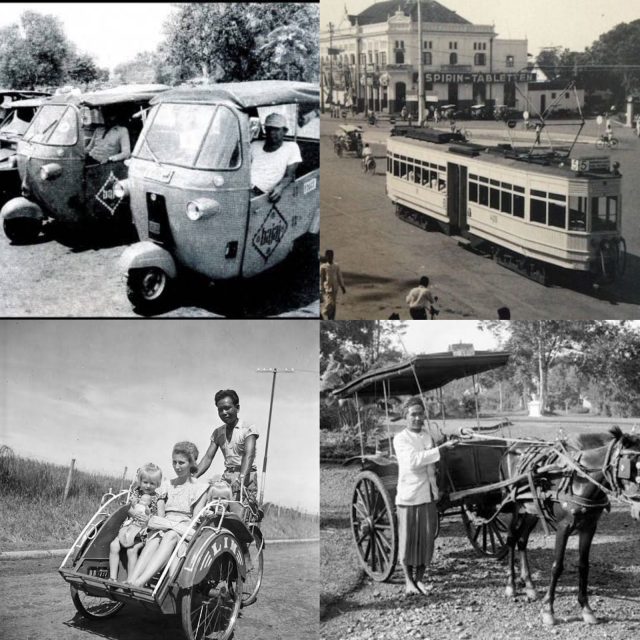
Transportation options in Jakarta from time to time include the following:
- Delman
- Becak (Pedicab)
- Trem
- Helicak
- Taksi
- Oplet
- Bajaj
- Bus Tingkat
- TransJakarta
- JakLingko
- MRT
- LRT
- KRL CommuterLine
- Online Transportation
The Start of MRT Jakarta
Research indicates that in Jakarta, private vehicle growth is 9.5% a year and road groth is 0.01% annually, while public transit only serves 50%-60% of daily journeys. Because of these problems, most Jakartans rely on private cars and motorcycles to go around the city, clogging up the roads everywhere. The Government of Indonesia recognized the need for a reliable and efficient public transportation system in Jakarta, the nation’s capital.
Mass Rapid Trans Jakarta, or MRT Jakarta for short, is a wholly-owned Indonesian corporation with headquarters in Jakarta. The first commercially-operated Jakarta electric train service began on 1st April 2019. The MRT Jakarta has demonstrated over the past year that it can provide exceptional service in transportation, thereby improving the quality of life of the people of Jakarta.
Top 3 Most-Used Public Transportation in Jakarta
MRT Jakarta
The Head of MRT Jakarta’s Commercial and Retail Division, Rendy Primartantyo, stated that the rise of MRT use is remarkable. There is an increase of 330% passengers compared to the early pandemic. The highest increase in passengers using MRT is seen during weekdays and working hours, with an average of 67,212 to 72,947 passengers each day. During the weekend, it is depicted there are approximately 44,100 passengers using the MRT.
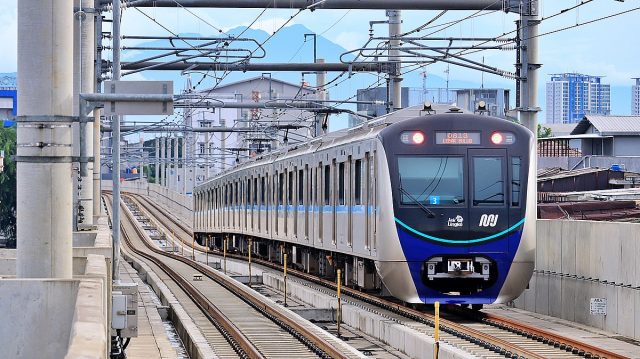
Currently, there are 13 stations connecting Central Jakarta to South Jakarta, for a total distance of 15.7 kilometers. Lebak Bulus Station is the southernmost station, and Bundaran HI Station is the northernmost. The stations are built as both aerial and underground stations, with the southern stations elevated and the northern stations underground, in the heart of Central Jakarta’s business district.
TransJakarta
Transjakarta operates through 243 bus stops spread across 13 corridors (main routes), which initially operates from 05.00 – 22.00 WIB, and now operates 24 hours in all corridors. Amidst the metropolitan city, TransJakarta is one of the most convenient transportation for people working in Jakarta.
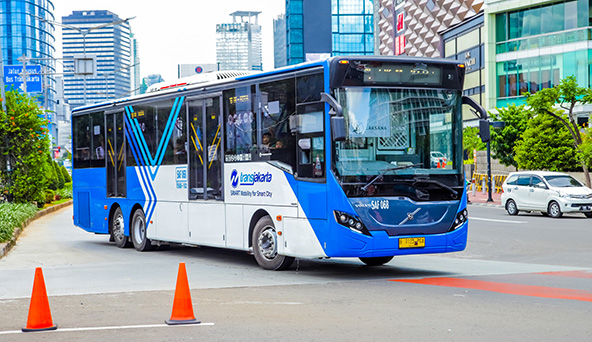
As of the current trend, the number of TransJakarta commuters reach 800 thousands per day, which increased by 3.9% compared to the previous months. According to the Head Division Secretary of TransJakarta, Anang Rizkani Noor, this achievement of passenger number is a proof of how Jakartan citizens lean more to using public transportations after the pandemic.
KRL
Kereta Rel Listrik (KRL) serves as a commuter line that connects Jakarta to its neighboring cities including Bogor, Depok, Tangerang, Bekasi, and South Tangerang.
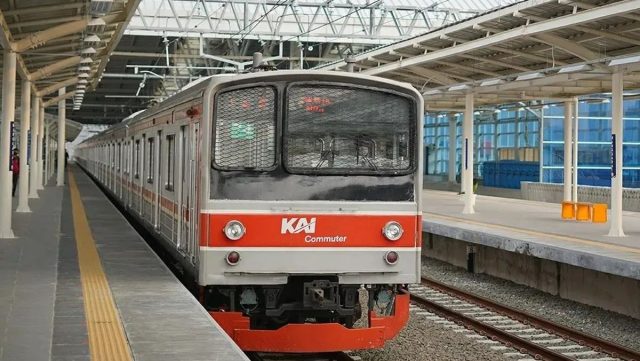
As the largest commuter train in Jakarta, KRL Jabodetabek serves train transportations to cities surrounding Jakarta such as Jakarta, Bogor, Depok, Tangerang, and Bekasi (Jabodetabek). Since the services are affordable and practical, many Jakartan locals use KRL to commute to or from Jakarta for work, holiday, or as a daily transportation. There are six lines and 80 stations that can directly take passengers to several Jakarta metropolitan areas and tourist spots such as Tanah Abang, Kota Tua, and Monas.
The users of TransJakarta has also shown a progressive improvement, where the number of regular passengers has reached more than 600 thousand. Prior to the pandemic, there were 1.2 million daily travelers using KRL. By November 2022, it is noted that KRL serves approximately 12.9 million passengers.
The visual below illustrates the top 3 most commonly-used public transportations in Jakarta and the quantity of passengers for each type of transportation:
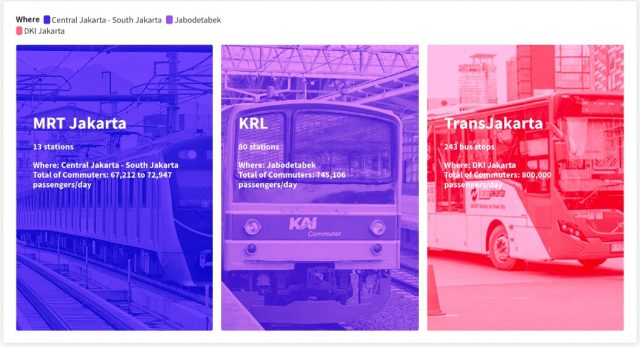
Jakarta’s Public Transportation Routes and Fares
In Jakarta, traffic has developed into an everyday phenomenon that occurs on a consistent basis. It appears that people who drive their own cars waste more time on the road due to the frequent occurrence of traffic delays. Walking on the footpaths is not a good idea either, since the roadsides do not provide a safe environment for pedestrians. Therefore, getting around Jakarta feels so much easier using public transportation! The city provides a variation of public transportation that connects almost all areas at affordable prices and guarantees constant safety.
What is listed below is the most-used public transportation in Jakarta with its detailed prices information and description.
What makes people use MRT Jakarta is that the vehicle has two lane variations, one above the ground and another goes its way underground. MRT also has faster traveling time than KRL, which means that passengers save more time and length when using this mode of transportation to reach their destination.
Schedules
| MRT | TransJakarta | KRL | |
| Weekdays | 05.00 – 23.00 | 24 hours (only for 13 primary routes) | 03.00 – 23.59 |
| Weekends | 06.00 – 23.00 | 24 hours (only for 13 primary routes) | 03.00 – 23.59 |
The interval time between MRT trains is 5 minutes on weekdays, while the interval time for KRL is between 10 and 15 minutes. For TransJakarta, the interval time differs from one route to another depending on the crowd.
Fares and payment methods
| Fares | Payment | |
| MRT | Rp4.000 – Rp14.000 | cashless (e-money: BCA Flazz, BNI Tapcard, Mandiri e-Money, JakLinko card, etc. e-money and via MRT app) |
| TransJakarta | Rp3.500 (one trip) | cashless (e-money: BCA Flazz, BNI Tapcard, Mandiri e-Money, JakLinko card, etc. ) |
| KRL | Rp3.000 (for the first 25 km) and an additional Rp1.000 for every 10 km | cashless (e-money: BCA Flazz, BNI Tapcard, Mandiri e-Money, JakLinko card, etc. ) |
Routes
Check out MRT’s station and route map. Click the image for a better view!
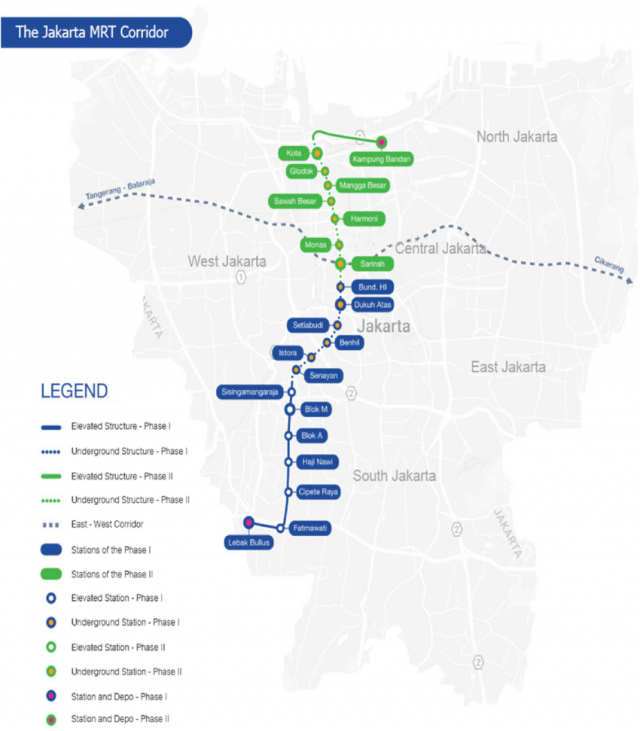
Check out TransJakarta’s stop and route map. Click the image for a better view!
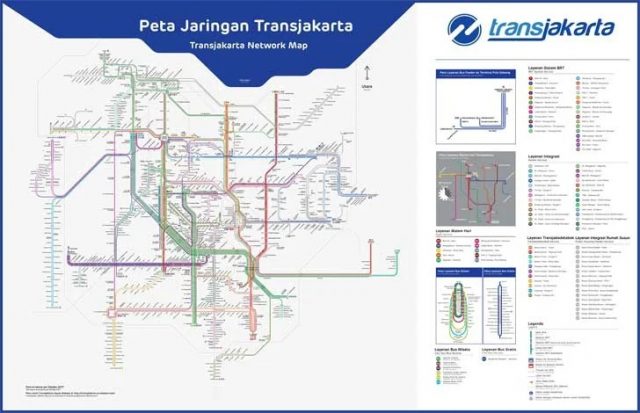
Check out KRL’s stop and route map. Click the image for a better view!
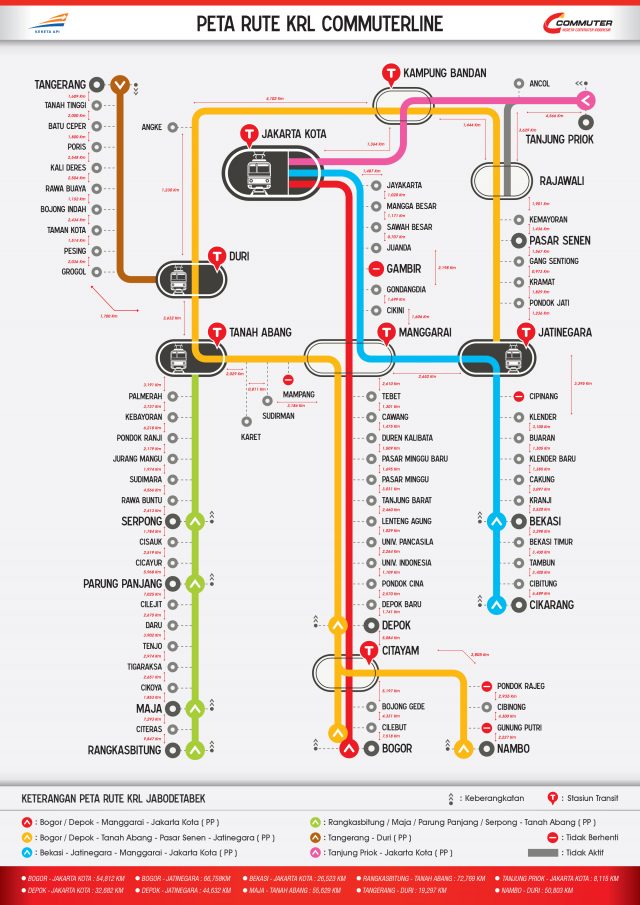
The Impact of Using Public Transportation in Jakarta
Through time, Jakarta has faced a lot of issues such as traffic jams and pollution. However, over time technology has developed and nowadays Jakarta has been facilitated with lots of Public Transportations such as MRT, LRT, KRL, TransJakarta, Taxi and much more. These Public Transportations bring a lot of benefits and personal advantages to the citizens of Indonesia, and at the other hand also reduce the issues of traffic jams and pollution Jakarta has been facing these past years. Below are some of the advantages and the positive impacts that Public Transportations bring to Jakarta and its citizens:
- Less traffic jams & faster mobilization
- Less pollution from personal vehicles
- Saving personal expenses
- Avoiding parking competition
Transportation infrastructures and services simulate the urban system to improve the quality of life and strengthen the economic competitiveness of Jakarta. However, expanding social and economical activities have caused economic crises in Jakarta’s Metropolitan area. Luckily, Jakarta’s MRT has also made an impact on economic growth and opened a lot of vacancies to serve customers. Currently, public transportation is well known to be used by workers due to its efficiency and mobility where people can spend more time with their families or friends instead of being on the road. This opened a lot of vacancies to serve customers, and workers will get easier access to their workplaces, as for the economy, it will grow around businesses near MRT stations such as hotels, malls, restaurants, etc.
This article is written by Comm B2024 students
- Vanessa Grace
- Aisha Candra
- Dian Kirana Rukmi
- Audrey Rauda
- Adisha Maharani
- Naufal Afif
Edited by: Ms. Lily El Ferawati

